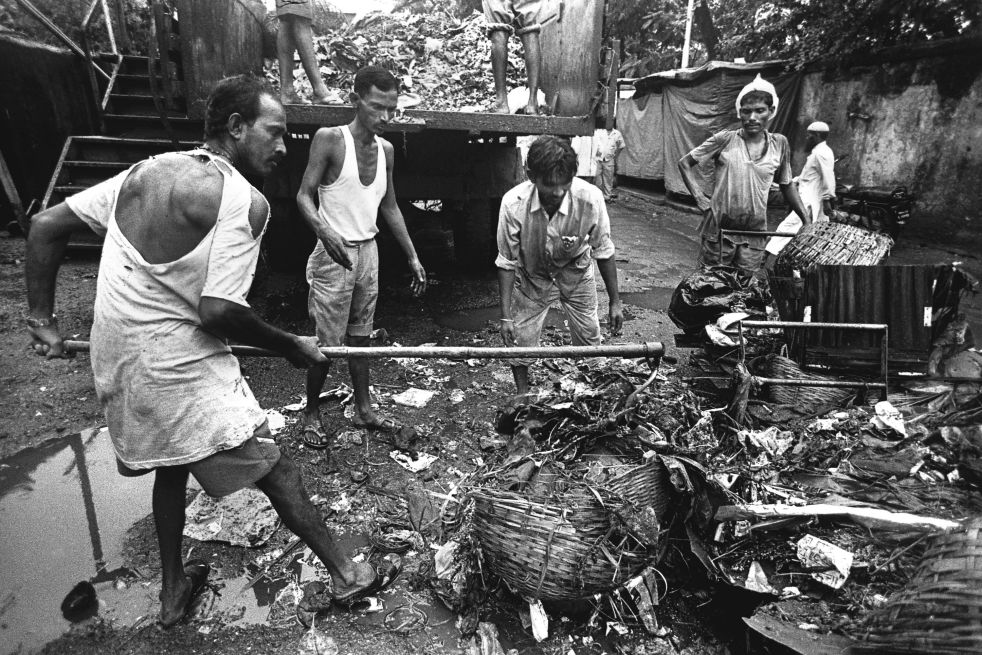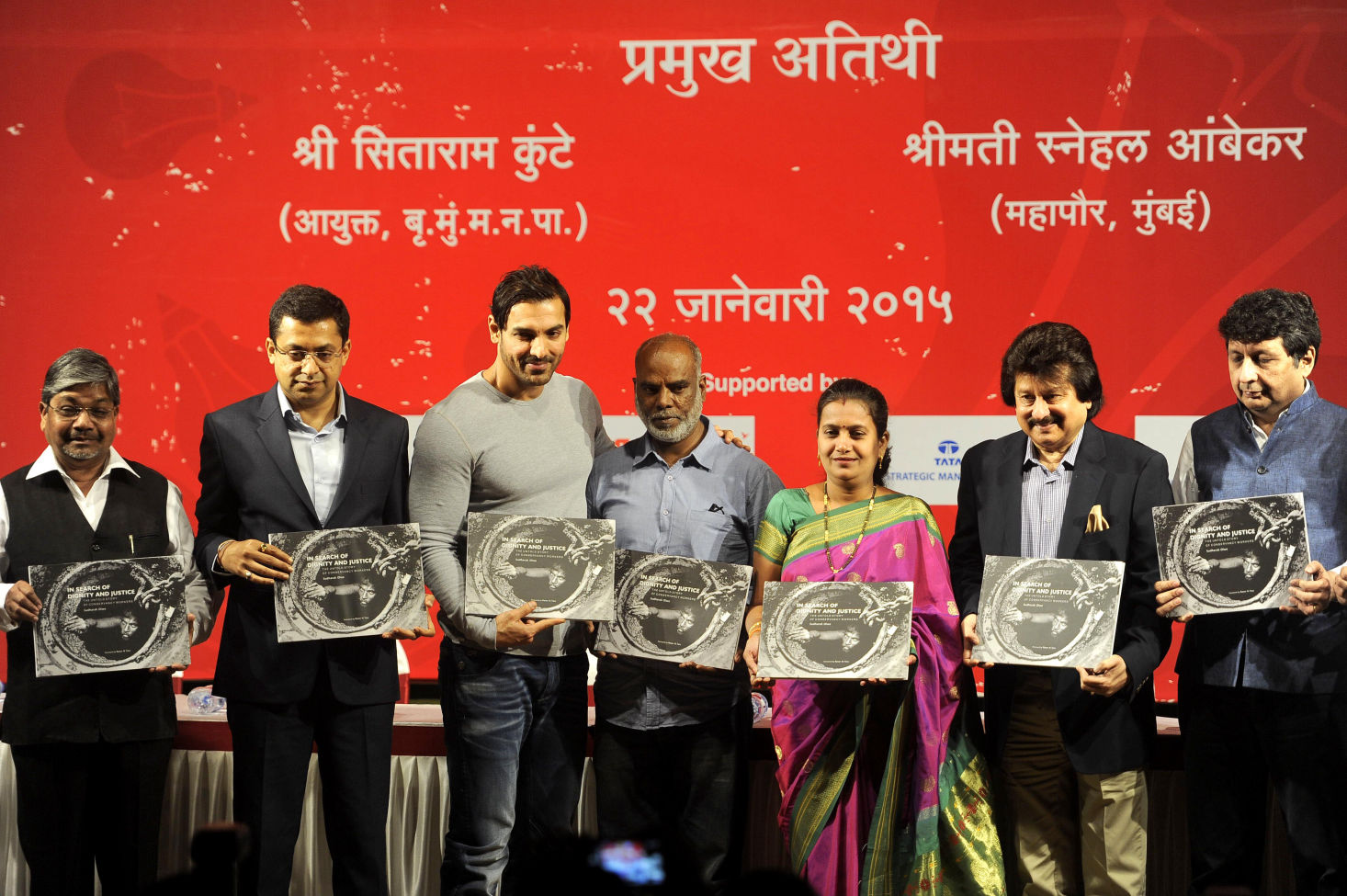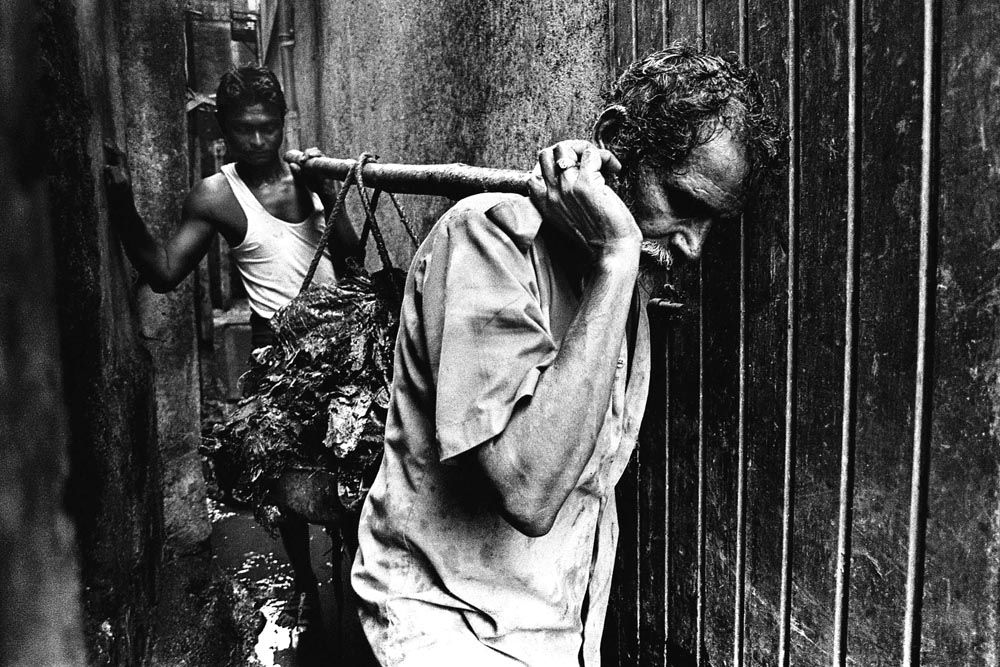
Moved by the images of horrific working condition of Conservancy Workers in Mumbai, Industrialist Ratan Tata initiates “Mission Dignity” to tackle issues of health, education and waste management.

20 years ago, photojournalist Sudharak Olwe came across the plight of these workers, meeting them and seeing first hand the horrific life they lead, he decided to shoot their pictures and tell the stories of these people who had no voice. Ignored and sidelined from main stream society, these workers have never been acknowledged by the public. With no sense of self worth - standing amidst filth and waste they have died inside their living bodies.
Making it his life’s mission to support and help the workforce and their future generations. His essay on the lives of these workers titled “In search of Dignity and Justice” was released in the media and met with massive public outcry and protests in support of the workers that led to authorities putting in more resources and policy for them.
No local segregation of dry, wet or biomedical waste coupled with bad civic sense has made the city dirtier than it should be.
A sewage infrastructure which is over 100 years old has to handlee the massive amounts of waste generated every day.

All 4 dumping grounds of the city have reached full capacitty years ago and yet they are burdened with more trash every day.
People have no sense of thankfulness or gratitude to the thousands of workers toiling away for us.


This collection of photos by Sudharak Olwe has been an eye-opener. It has captured and brought to our consciousness, the plight of a group of people we seem to have relegated to a collective blind-spot. Conservancy workers live and work in our own city. They are as much citizens as we are. Yet, we do not seem to be aware of their very existence and, least of all the plight of their condition. We should strive to eliminate manual conservancy work in Mumbai and work dedicatedly towards rehabilitation, retraining and redeploying the worker, with dignity.
I am grateful to each and every one of the 38,000 conservancy workers of Mumbai for their ceaseless service. Sudharak Olwe has followed their lives for over a decade with sensitivity that he has brilliantly combined with his skill of photography. Through this poignant and hard-hitting documentation, he has given me an opportunity to recognize them and to pledge my commitment to help change their living conditions.


"After the launch of Olwe’s book everyone was aware about the discrimination the conservancy workers face and that led to the launch of Mission Garima which was a collaboration of Municipality Corporation of Greater Mumbai and the Tata trust, Mumbai. The main aim was to eliminate unsafe practices of manual scavenging in Mumbai."

We were invited by TedX Gateway to speak and share about the conservancy workers and their issues. Watch the video in link below.


A joint initiative by the Municipal Corporation of Greater Mumbai (MCGM) and TATA Trusts. The Mission is to eliminate unsafe and undignified practices of conservancy workers in Mumbai. The Trust is working on Technological solutions, Health camps, Outreach and Awarness.

About 40,000 conservancy workers, also known as sweepers, are employed by the Brihanmumbai Municipal Corporation. These workers collect the city's garbage, sweep the streets, clean the gutters, load and unload garbage trucks and work in the dumping grounds. This is their story.
The Images that are part of this project are not pretty, not easy to look at nor would you hang it up on your walls. But these images have the power to create definitive change in the lives of these workers and it has done so. Such images constitue Social Documentary Photography and define PPT's mission to create impact on marginalised communities through photography.
There is a long way to go to fully help the workers and their families. Change here is a continous process and cannot be implemented in one go. Years of stigma, discrimination and injustice have to be broken to truly help them. This includes better public outreach, educating the future generations and providing alernative means of livelihood. Manual Scavenging and the undignifed practice of using bare hands to pick up garbage has been outlawed by the Government of India yet it thrives in the largest metropolitan city of the country. The day these workers do not have to use plastic bags as gloves and caps is the day definitive change will have started. Till then we work, we shoot, we protest and demand dignity and justice.

As a non-profit, all resources go towards funding workshops and other educational/documentation activities. You can donate any amount to support our different projects or invite us to conduct workshops for you or your institute. We are also looking for long-term funding to mount national projects in communities across the country.